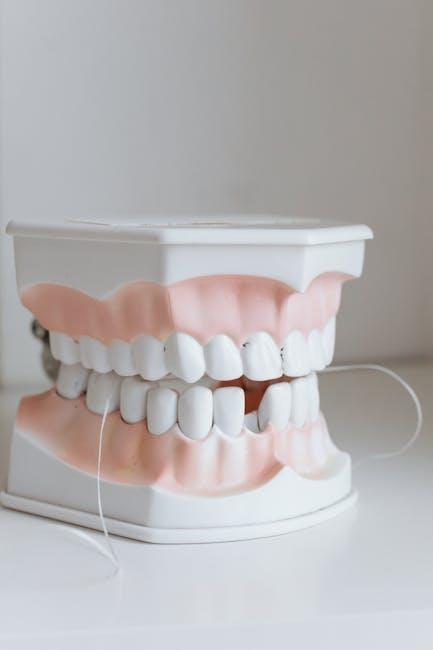Fluoride Ban Could Create Cavities For 1 Of Every 3 U.S. Kids – U.S. News & World Report
The debate over fluoride in public water supplies has resurfaced with new urgency as a potential ban could affect the dental health of millions of American children. According to U.S. News & World Report, one in every three kids in the United States could develop cavities if fluoride is removed from drinking water. This article explores the alarming implications of a fluoride ban, why fluoride has been a cornerstone of public health, and practical tips for protecting your child’s teeth even in a fluoride-free world.
What Is Fluoride and Why Is It Important?
Fluoride is a naturally occurring mineral that is widely added to public water supplies and dental products due to its ability to prevent tooth decay. It works primarily by:
- Strengthening tooth enamel and making it more resistant to acid attacks from bacteria and sugars.
- Remineralizing early stages of tooth decay and reversing minor cavities.
- Inhibiting the growth of harmful oral bacteria that produce acids leading to decay.
Widespread Benefits of Fluoride
Since the introduction of water fluoridation in the mid-20th century, dental health among U.S. children has significantly improved. These benefits include:
- A 25-40% reduction in the incidence of cavities among children and adults.
- Reduction in dental treatment costs and restorative procedures.
- Equitable access to cavity prevention, especially in low-income communities.
Potential Impact of a Fluoride Ban on U.S. Children
The proposed removal or banning of fluoride in water supplies is a subject of controversy fueled by misinformation and concerns about overexposure. However, trusted health organizations such as the Centers for Disease Control and Prevention (CDC) and the American Dental Association (ADA) affirm fluoride’s safety at recommended levels.
According to recent data cited by U.S. News & World Report, banning fluoride could lead to a spike in dental cavities that impacts approximately one of every three children in the United States.
Why Are Children at Higher Risk?
- Children’s developing enamel is more vulnerable to decay without the protective effects of fluoride.
- Kids generally have higher sugar consumption which increases cavity risk.
- Fluoride is critical during the formative years for establishing lifelong oral health.
| Projected Consequences of Fluoride Ban | Estimate for U.S. Children |
|---|---|
| New cavities per year | +34 million |
| Children affected by increased decay | 33% (1 in 3) |
| Additional dental care costs | Billions in healthcare |
| School absenteeism due to dental pain | Significant increase expected |
Challenges and Concerns Around Fluoride
Opponents of fluoride usage raise concerns about potential health risks such as dental fluorosis, toxicity, or other systemic effects. While mild dental fluorosis (white spots on teeth) can occur with excessive fluoride, the benefits in preventing cavities outweigh these minimal risks when fluoride levels are maintained within recommended guidelines.
It is important to differentiate between safe, controlled fluoride exposure and excessive intake, which can be hazardous.
How to Protect Your Child’s Teeth If Fluoride Is Banned
Even if fluoride were removed from community water supplies, parents can still take steps to reduce cavity risks through alternative measures:
- Use fluoride toothpaste and mouth rinses: These continue to provide topical protection.
- Maintain excellent oral hygiene: Encourage brushing twice daily and flossing regularly.
- Limit sugary snacks and beverages: Reduce frequency of acid attacks on enamel.
- Schedule regular dental checkups: Early detection of decay helps avoid complications.
- Consider dental sealants: A protective coating applied by dentists to prevent cavities on molars.
- Discuss supplements or alternative fluoride sources: Only under dentist supervision to avoid overexposure.
Practical Oral Health Tips for Parents
- Supervise children’s brushing until age 8 to ensure adequate technique.
- Encourage drinking tap water if fluoridated or bottled water with fluoride content.
- Reduce sticky and sugary food intake especially between meals.
- Use sugar-free gum to stimulate saliva flow, which helps naturally remineralize teeth.
- Educate children on the importance of oral health.
Case Study: Communities Without Water Fluoridation
Research shows that communities without water fluoridation consistently have higher cavity rates, particularly among children from lower socioeconomic backgrounds where access to dental care may be limited.
For example, a study comparing two similar towns—one with fluoridated water and one without—found a 30% higher incidence of dental caries in children without fluoride exposure. This highlights fluoride’s role not only in prevention but in promoting dental equity.
Conclusion: Fluoride Remains Essential for Children’s Dental Health
As debates around fluoride continue, the evidence is clear: banning fluoride from water supplies could have serious, long-lasting consequences for children’s oral health in the U.S. With an estimated one in three kids vulnerable to increased cavities, maintaining safe fluoride practices is paramount.
Parents, healthcare providers, and policymakers must work together to educate about fluoride’s benefits and advocate for balanced oral health strategies. By combining fluoride use with sound dental hygiene and healthy habits, we can protect America’s children from unnecessary dental pain and costs.
Stay informed, stay proactive, and prioritize your child’s smile!


